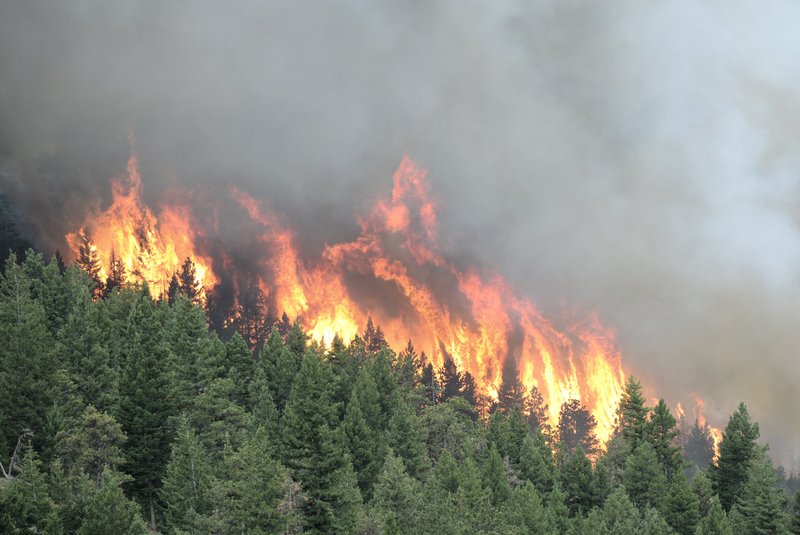WOODLAND PARK, Colo. — A stubborn and towering wildfire jumped firefighters' perimeter lines in the hills overlooking Colorado Springs, forcing frantic mandatory evacuation notices for more than 32,000 residents, including the U.S. Air Force Academy, and destroying an unknown number of homes.
The blaze doubled in size overnight to more than 24 square miles, fire information officer Rob Dyerberg said Wednesday. He said homes were destroyed but authorities don't yet know how many.
Heavy smoke and ash billowed from the mountain foothills west of the city. Bright yellow and orange flames flared in the night, often signaling another home lost to the Waldo Canyon Fire, the No. 1 priority for the nation's firefighters.
Interstate 25, which runs through Colorado Springs, was briefly closed to southbound traffic Tuesday.
"It was like looking at the worst movie set you could imagine," Gov. John Hickenlooper said after flying over the 9-square-mile fire late Tuesday. "It's almost surreal. You look at that, and it's like nothing I've seen before."
With flames cresting a ridge high above its scenic, 28-square-mile campus, the Air Force Academy told more than 2,100 residents to evacuate 600 households.
A curtain of flame and smoke hung above the academy's Falcon Stadium; billowing gray clouds formed a backdrop to its aluminum, glass and steel Cadet Chapel, an icon of the academy. Elsewhere, police officers directing traffic and fleeing residents covered their faces with T-shirts and bandanas to breathe through the smoke.
"People are freaking out," Kathleen Tillman told The Denver Post. "You are driving through smoke. It is completely pitch black, and there is tons of ash dropping on the road."
Colorado Springs Fire Chief Richard Brown told The Post, "This is a firestorm of epic proportions."
And Hickenlooper, who spoke with Homeland Security Secretary Janet Napolitano Tuesday, told anxious residents that "We have all the support of the U.S. government. We have all the support of the state of Colorado. And we want everybody here to know that."
Throughout the interior West, firefighters have toiled for days in searing, record-setting heat against fires fueled by prolonged drought. Most, if not all, of Utah, Colorado, Wyoming and Montana were under red flag warnings, meaning extreme fire danger.
The forecast for the Waldo Canyon fire called for cooler, calmer weather Wednesday, with a high of 86 and gusts of up to 10 mph.
In central Utah, authorities found one woman dead Tuesday when they returned to an evacuated area, marking the first casualty in a blaze that consumed at least two dozen homes. Sanpete County sheriff's officials said they hadn't identified the victim, whose remains were found during a damage assessment of the 60-square-mile Wood Hollow Fire near Indianola.
The nation is experiencing "a super-heated spike on top of a decades-long warming trend," said Derek Arndt, head of climate monitoring at the National Climatic Data Center in Asheville, N.C.
The Waldo Canyon fire, which started Saturday, was 5 percent contained before 65-mph wind gusts sent it surging toward Colorado Springs as it covered 10 square miles. The cause was under investigation.
To the north in Boulder County, officials evacuated 26 households when a wildfire erupted Tuesday afternoon following a lightning storm. No structures were immediately threatened, but the National Center for Atmospheric Research, perched on a hilltop in front of Boulder's famous Flatirons foothills, closed as a precaution.
And in northern Colorado, the 136-square-mile High Park Fire has destroyed 257 homes, authorities said. That fire was triggered by lightning June 9.
